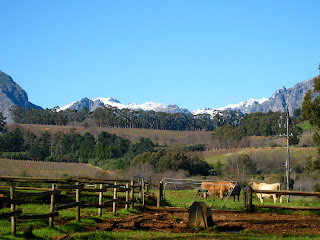I. Test setup, five samples per person at one time
Materials:
- Prepare spread sheet with information of specific species, year collected and specific plant number
- Remove Pollen from freezer, where it has been stored at -15° Celsius.
- Prepare Petri dishes, one nesting pair for each separate pollen package, washed with soap, rinsed and completely dry.
- Ethanol to wipe inside of Petri dishes, then close immediately.
- Prepare testing media, a germination solution of 65% sucrose and 15% boric acid in distilled water and store in fridge until used.
- Glass pipette for pipetting solution drops into Petri dish
- Distilled water, provide enough to seal Petri dishes and to soak paper towel in incubation tray
- Set up ethanol in a small glass column for cleaning brushes between different pollen samples
- 3 small brushes # 2
- Colored permanent marker for labeling Petri dishes
Method:
Prepare a large tray, line it with paper towels and wet slightly with distilled water. Label the smaller of the nesting Petri dishes, abbreviating the species name, the year collected and the plant number (if applicable).
Start lamina flow cabinet, and place tray and all materials inside. From now on all work is done inside the cabinet to avoid contamination, which encourages growth of fungi and other problems, resulting in defective tests. Use latex gloves when working, and proceed methodical and as clean as possible. Lay out 5 nesting Petri dishes inside the tray in the right order and open them. Fill larger dish with small amount of distilled water, just enough to create a airtight seal when the small dish is placed inverted inside.
With pipette carefully place three drops of germination liquid in each one of the labeled smaller dishes, such setting up three tests per sample. Do not touch the tip of pipette with anything, as it goes back into the solution and could contaminate it. Do not make the three drops too large as they might ‘roll’ to the edge when turned over and placed in the larger one.

Open pollen package carefully and with brush remove small amount of pollen. Carefully tap brush one over each drop, making sure to have placed some pollen, but also avoid too much as this will result in a density of pollen in the solution that is very hard to count later on.
Then carefully turn Petri dish with the three drops upside down, and place inside larger dish with the distilled water. This is to seal the drops with the pollen from the outside so they won’t dry out during incubation.
When all Petri dishes are set up, cover with a second tray, remove very carefully from lamina flow cabinet, and place it into an incubator set at 28° Celsius for 48 hours.

II. Counting of Developed Pollen under Microscope
Materials:
- Incubated pollen in Petri dishes
- Pipette for transferring pollen in solution
- Slides and slide covers
- Microscopes, set at a 40x magnification

Method:
Carefully remove tray with Petri dishes from incubator. Open Petri dish with hang-drops, and turn over carefully. With clean pipette remove small amount of liquid from center of solution drop, make sure to pick up some of the wetted pollen, but nothing outside the drop. Pipette on to the center of slide and add cover slide over it.
Place prepared slide under microscope, a 40x magnification seems ideal.
Visual grid sample counting method is used as following. Start in one corner and move over sample in a systematic order, e.g. down and over, up and over, down and over, and so forth. Randomly choose 10 spots with at least 10 but ideally no more then 50 pollen grains.
Count all pollen that clearly developed from the perfectly round shape and clear center of undeveloped pollen, to an uneven shape showing a pollen tube protruding out from a darkened center. Then count all undeveloped pollen, and note all numbers on spreadsheet.

Fig. 4. fully germinated pollen with long tube protruding.
Fig.5. pollen with darkened center and tube development starting, as well as completely circular undeveloped pollen with clear center
Proceed with new slide and pipette to the next drop until all three tests in Petri dish are counted out, then continue with next Petri dish containing new pollen sample. Enter all results for the three replicate samples for each species sample into spreadsheet, combine and calculate an average percentage of developed pollen for each species.
Developed by Phakamani Xaba and De Wet Boesenberg
Technicians: Karen Wall, Enrique January, Dodo Loechle














































